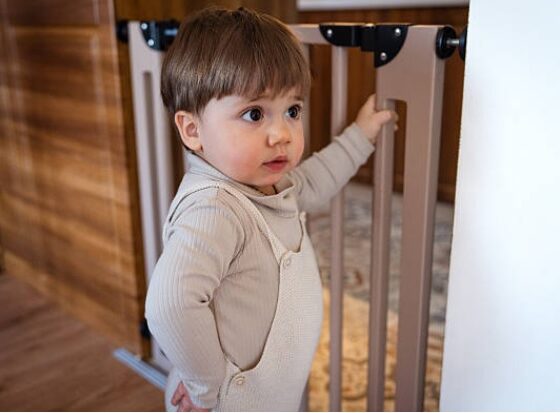Bringing a new baby into your life is as exciting as it is overwhelming. Between sleepless nights, endless diaper changes, and figuring out what those tiny cries mean, parenting can sometimes feel like a full-time juggling act. But don’t worry—baby training doesn’t have to be a mystery or a stress-fest. In this blog, we’re breaking down simple, practical tips to help you navigate those early days with confidence and a little more ease. Whether you’re a first-time parent or just need a refresher, consider this your go-to guide for making parenting a breeze!
Getting Your Little One on a Sleep Schedule Without the Tears
establishing a consistent sleep routine for your baby doesn’t have to be a battlefield filled with tears. Start by creating a calming pre-sleep ritual that signals it’s time to wind down. Think along the lines of a warm bath, a gentle lullaby, or a soothing story — activities that help your baby associate these cues with sleep. Keep the environment cozy but not too stimulating: dim lights,soft sounds,and a cozy room temperature go a long way. Remember, patience is key; babies thrive on repetition, so stick to the routine even if progress seems slow.
To make the transition smoother, try incorporating these gentle techniques:
- Gradual adjustment: Shift nap and bedtime by 10-15 minutes every few days to align with your target schedule.
- Consistent wake times: Aim to wake your baby at the same time each morning, even after a rough night.
- Comfort objects: Introduce a soft blanket or plush toy to offer reassurance during sleep times.
- Responsive soothing: Attend to your baby’s cries with calm reassurance rather of immediate pick-up, encouraging self-soothing skills.
| Time | Activity |
|---|---|
| 6:30 PM | Bath + Pajamas |
| 7:00 PM | Quiet reading or lullaby |
| 7:20 PM | Lights out, cuddles |

Mastering Mealtime Magic Tips for Stress-Free Feeding
Feeding time doesn’t have to be a battlefield! Staying calm and creating a predictable routine can turn mealtime into a joyous, bonding experience rather than a stressful chore. Try offering small portions of new foods alongside favorites to encourage curiosity without overwhelming your little one. remember, patience is your secret weapon — it may take several tries before your baby warms up to a new flavor or texture.Keep distractions minimal by turning off screens and engaging your baby with cheerful eye contact and gentle encouragement. This helps them focus on eating and builds positive associations with mealtime.
Here are some fuss-free strategies you can start today:
- Set a schedule: Babies thrive on routine—consistent meal times help regulate appetite and mood.
- Use toddler-friendly utensils: shining, easy-to-grip spoons make self-feeding more fun and less messy.
- Offer choices: Present two healthy options to empower your baby’s independence and reduce pushback.
- Celebrate small wins: Every bite counts! Positive reinforcement builds confidence.
| Common Mealtime Challenge | Stress-Free Solution |
|---|---|
| Food rejection | Mix veggies with favorite dips or sauces |
| Messy eaters | Use bibs and easy-clean trays |
| Short attention span | Keep meals short and lively |
| picky eating | Rotate foods to keep variety interesting |

Diaper Duty Hacks That Save You Time and energy
When it comes to tackling diaper changes with speed and sanity intact, readiness is your secret weapon. Keep all essentials within arm’s reach—think diapers, wipes, creams, and a clean outfit—*before* you begin, so you’re not scrambling mid-change. Consider setting up a diaper caddy or organizer in each frequently used area of your home. This way, no matter where baby’s diaper emergency strikes, you’ve got everything you need at hand. Also, try using disposable changing pads to save on laundry and keep messes contained without the extra fuss.
Another game-changer? Embrace multitasking opportunities and baby’s natural curiosity. Use fast distraction tactics like a favorite toy or a fun song to keep your little one entertained and still during diaper swaps. For the toughest messes, consider a simple wipe-clean changing mat that’s easy to sanitize. Here’s a handy comparison to help you decide which changing surface suits your family’s pace:
| Changing Surface | Pros | Cons |
|---|---|---|
| Changing Table | Organized & comfy height | Bulky & less portable |
| Portable changing Pad | compact & travel-friendly | Less padding, quick wear |
| Disposable Changing Pad | Hygienic & no cleanup | Cost adds up over time |
- Pro Tip: Always have a small stash of plastic bags nearby for quick disposal of soiled diapers.
- Quick Hack: Use diaper liners to make cleanups and wipes much easier, saving precious minutes.
Playtime Essentials to Boost Your Baby’s Growth and Giggles
Choosing the right playtime tools doesn’t just entertain your little one—it actively fuels their brain and body development. Think colorful rattles that encourage grasping and explore sounds, or soft blocks that invite stacking and knocking down. These simple toys promote fine motor skills, hand-eye coordination, and sensory discovery all wrapped in smiles and giggles. Don’t forget about mirrors! Babies love looking at faces, and a safe baby mirror helps them learn about self-recognition and social cues, sparking those precious early connections.
For a well-rounded playtime routine, mix in activities that support diffrent growth areas. here’s a quick checklist of must-haves to keep handy:
- Soft sensory balls: Perfect for tactile exploration.
- Stacking rings: Boost problem-solving and hand dexterity.
- Music toys: Encourage auditory development and rhythm.
- interactive books: Spark language skills and visual tracking.
| Playtime Essential | Benefit |
|---|---|
| Rattles | Enhance motor skills & auditory senses |
| Soft Blocks | Develop coordination & spatial awareness |
| music Toys | Stimulate auditory learning & mood |
| Baby Mirror | Promote self-recognition & social growth |
Q&A
Q&A: Baby Training 101 – Tips to Make Parenting a Breeze!
Q: what exactly is “baby training”? Sounds kinda intense!
A: Haha, don’t worry—it’s not boot camp for your little one! Baby training is just about gently helping your baby get into helpful routines and habits, like sleeping, feeding, and even those messy diaper changes. The goal? Making life easier for both baby and parents.
Q: When’s the best time to start baby training?
A: Honestly, the earlier, the better! But newborns mostly work on eating and sleeping. Once your baby hits around 3-4 months, you can start introducing gentle routines, like consistent nap times and bedtime rituals. Every baby’s different, so go at your own pace.Q: How do I get my baby to sleep through the night?
A: The classic question! Start by creating a calming bedtime routine—think diaper change, a story or lullaby, dim lights. Try putting your baby down sleepy but still awake so thay learn to fall asleep on their own. Patience is key; it may take a few weeks for them to adjust.
Q: What about feeding—any training tips?
A: Feeding time should be relaxed! Whether breastfeeding or bottle-feeding, watch for hunger cues rather than sticking to a rigid schedule. As your baby grows, you can gently guide them toward more regular meal times but keep it flexible. Also, introducing solids around 6 months is an exciting milestone!
Q: how can I handle diaper training without losing my mind?
A: Ha, the struggle is real! Keep your diaper changing station stocked with all essentials within arm’s reach to speed things up.Talk or sing to your baby during changes—this distraction can make it smoother. And keep a stash of extra clothes handy for surprise leaks!
Q: Any advice on establishing routines without stressing out?
A: Totally! Routines are great,but they shouldn’t be rigid. Adaptability is your friend—babies grow and change rapidly. Pick a few key things like consistent nap times or bedtime rituals,then let the rest flow naturally. And remember, it’s okay if certain days feel chaotic. You’re doing amazing!
Q: What’s the biggest mistake new parents make with baby training?
A: Trying to do too much, too fast. Babies thrive on consistency but also need time to adjust.Also, comparing your baby to others can add needless stress. Focus on your own little one’s pace and celebrate the small wins!
Q: Any last pro tips to make baby training less stressful?
A: yes! Don’t hesitate to ask for help—partner, family, friends—parenting is a team sport. Keep a sense of humor; there will be diaper explosions and sleepless nights, but they pass. And most importantly, trust your instincts. You got this!
Insights and Conclusions
And there you have it—your crash course in baby training made simple! Remember, parenting doesn’t come with a manual, but with a little patience, consistency, and a sprinkle of humor, you’ve got this. Every baby is unique, so don’t stress the hiccups along the way. Just keep trying, keep loving, and enjoy those adorable moments (even the messy ones). Here’s to making parenting a breeze—one tiny step at a time! Catch you in the next post! 😊👶✨










